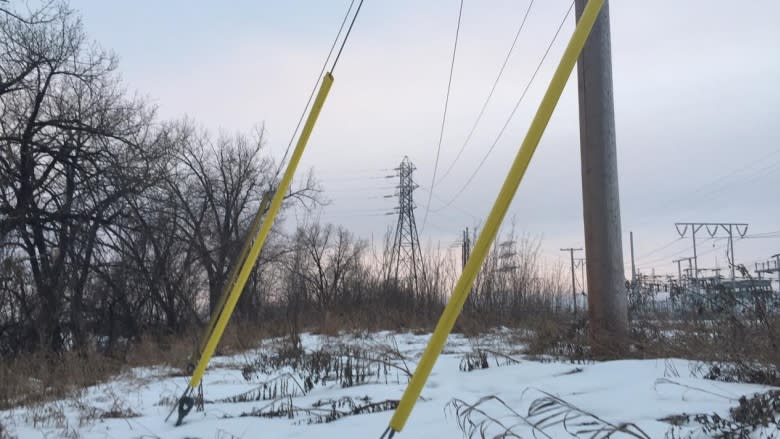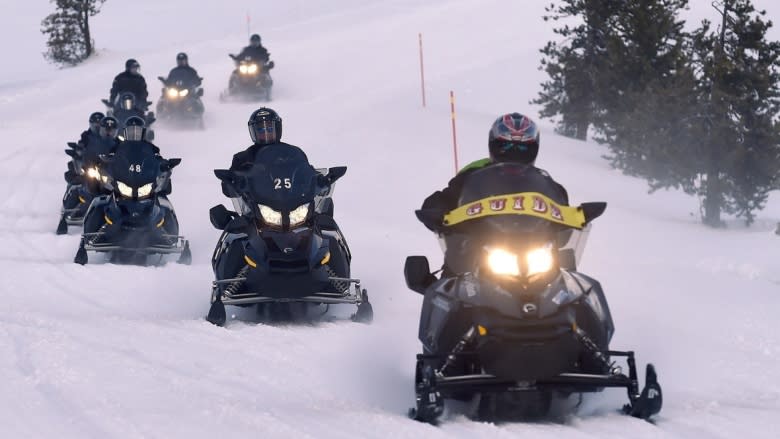Snowmobile fatality lawsuit questions SaskPower's marking of guy wires
It was a clear and sunny February day in 2011 and Tracy Abbott was in a snowmobile rally near Meadow Lake, Sask.
The 47-year-old veteran sledder was riding in the ditch alongside Highway 4 south of Meadow Lake when he hit a guy wire that was attached to a power pole.
He died at the scene from a "severe traumatic injury" to his neck and head.
Abbott's death highlights the dangers facing thousands of snowmobilers and raises questions about what is reasonable expectations of safety for riders.
The lawsuit
Abbott's family is suing SaskPower.
"Miss Abbott believes that had that line either been marked with one of those plastic guards at the bottom that were visible over the snow line, or had the line been attached to centre the load at the top of the pole, this collision could have been prevented," said Saskatoon lawyer Jonathan Abrametz.
"After the accident, it was made so that it was visible. There was markers placed on it immediately after."
SaskPower declined interview requests from CBC because the case is before the courts.
But in its statement of defence, the corporation said that the power pole and guy wires were in full view. It suggests that the accident was caused by Abbott speeding and not paying attention.
Abrametz said hitting that wire at any speed would result in a catastrophic injury.
"Alcohol was ruled out by the RCMP as a factor to this collision," he said.
"What the coroner and the RCMP both believed was that it was the low angle of the guy wire attached to the power pole, and the fact that there wasn't a marking, there wasn't a conspicuous marker that was visible at the bottom of the line that would have warned someone that the line was there."
The bigger picture
The case has implications for the larger snowmobiling community.
There are more than 10,000 kilometres of snowmobile trails in the province and upwards of 18,000 registered machines in any given year.
But riders do not just ride on trails. They go through fields and forests, and in ditches alongside highways, which is legal in Saskatchewan.
Chris Brewer, president of the Saskatchewan Snowmobile Association, said in the end it's the responsibility of the driver to ensure their own safety.
"I've ridden in the ditch. I've been with folks that have slammed into a culvert or there's a stone in the ditch and they've hit it and broke their snowmobile. It's rider beware," he said.
He couldn't speak to the specifics of Abbott's death because he is an expert witness in the case.
"The operator of that snowmobile, it is their responsibility: They should know their surroundings and they should know they can encounter something at any given time," he said.
But the circumstances of the accident raise issues that go beyond snowmobiling.
Abrametz said the guy wire and its angle would pose a similar hazard in the summer when it would be obscured by weeds and sit at neck level for people riding all-terrain vehicles.
Abrametz said both sides in the case just wrapped up exchanging documents and are now moving to pre-trial meetings.


